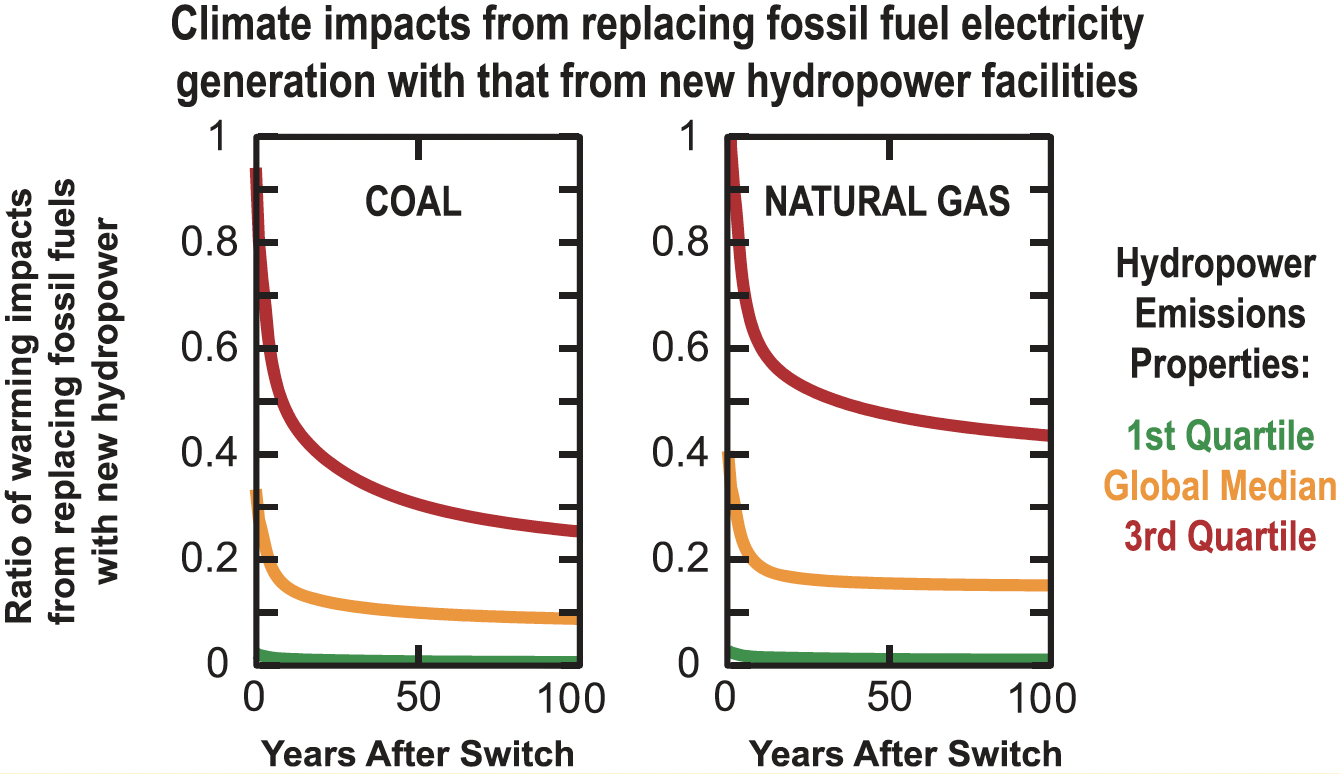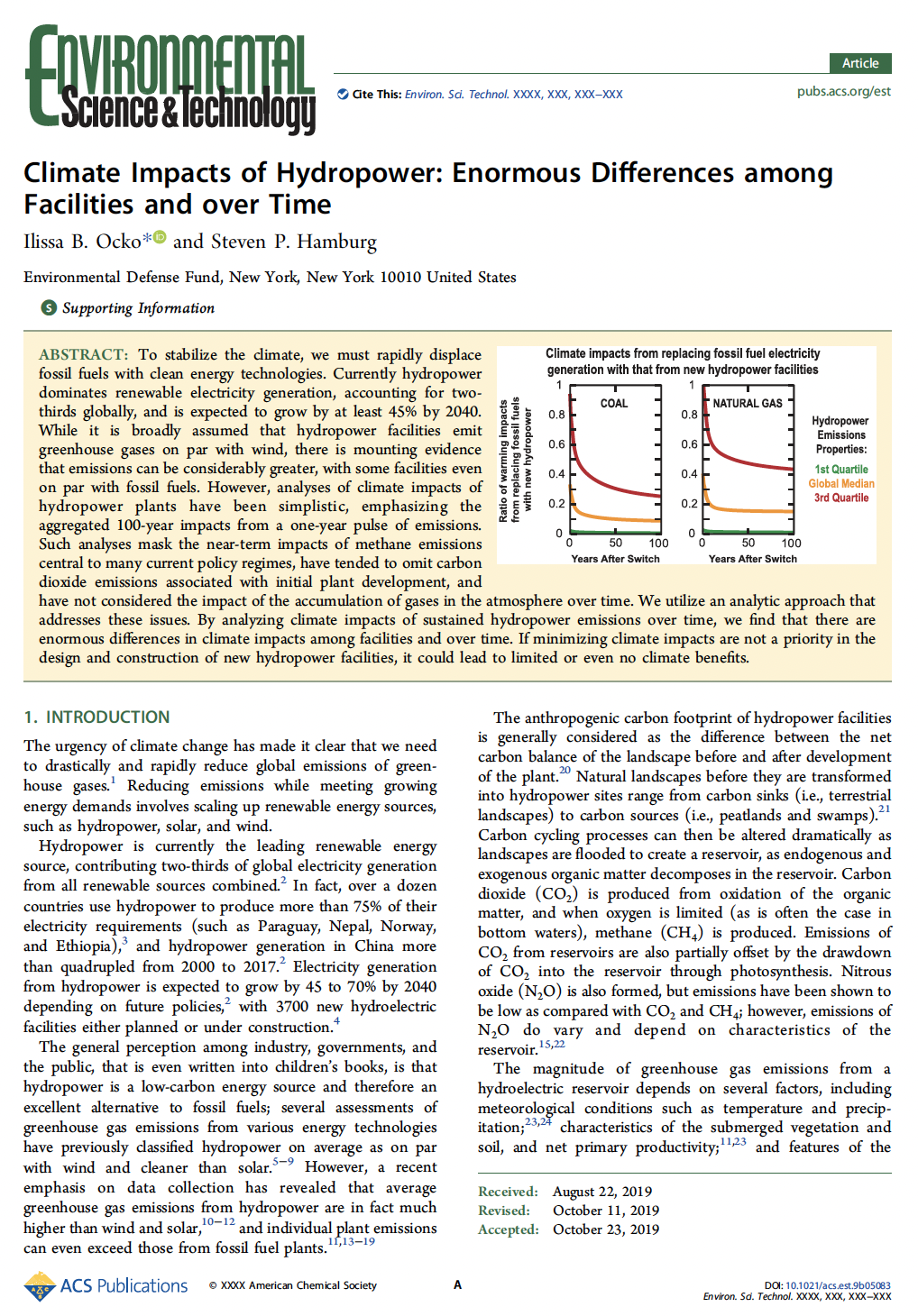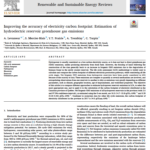Abstract: To stabilize the climate, we must rapidly displace fossil fuels with clean energy technologies. Currently hydropower dominates renewable electricity generation, accounting for two thirds globally, and is expected to grow by at least 45% by 2040. While it is broadly assumed that hydropower facilities emit greenhouse gases on par with wind, there is mounting evidence that emissions can be considerably greater, with some facilities even on par with fossil fuels. However, analyses of climate impacts of hydropower plants have been simplistic, emphasizing the aggregated 100-year impacts from a one-year pulse of emissions. Such analyses mask the near-term impacts of methane emissions central to many current policy regimes, have tended to omit carbon dioxide emissions associated with initial plant development, and have not considered the impact of the accumulation of gases in the atmosphere over time. We utilize an analytic approach that addresses these issues. By analyzing climate impacts of sustained hydropower emissions over time, we find that there are enormous differences in climate impacts among facilities and over time. If minimizing climate impacts are not a priority in the design and construction of new hydropower facilities, it could lead to limited or even no climate benefits.
Authors: Ilissa B. Ocko and Steven P. Hamburg
Given the limited data on the annual cycle of direct hydropower emissions globally and its potential importance in impacting climate change, there is a need for collecting more comprehensive data on greenhouse gas emissions from hydropower reservoirs to reduce uncertainty and fully understand the climate implications of hydropower. The underlying message that hydropower is not universally beneficial to the climate needs to be more widely understood if the global commitment to reduce global warming rates are to be met.



